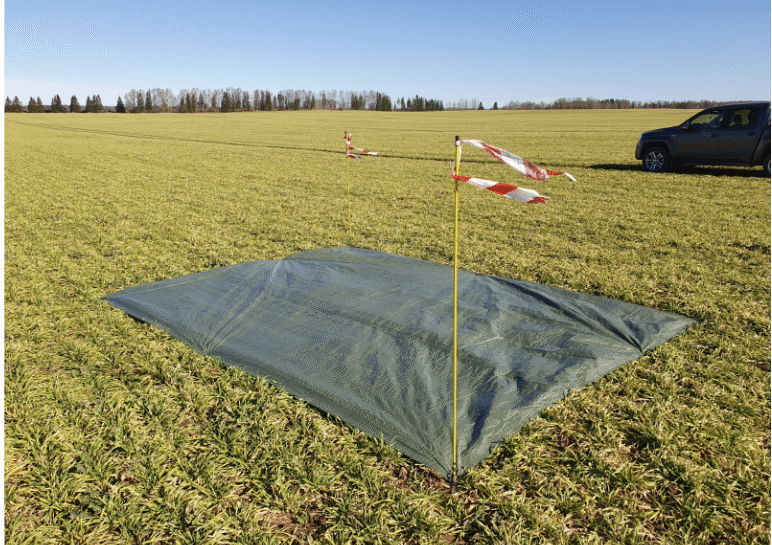CropVise Tarp Control Protocol

Why we use tarp controls
Tarp controls let us compare sprayed and unsprayed crop side by side.
This shows if the spray recommendation worked — and how much the nutrient status improved.
Each tarp gives us two extra data points:
- One from the treated area
- One from the unsprayed area under the tarp
This helps validate the spray and improve long-term nutrient planning.
Tarp controls are part of the pilot and are 90% covered by PRIA’s advisory subsidy.
Before you spray
To take part in tarp control:
- Sign the Farmer Participation Agreement
- Then sign the Tarp Control Advisory Agreement in ePria
(This must be done before your first tarp-controlled spray)
We’ll create the ePria contract and check your eligibility before the first spray control. We will let you know as soon as we have it prepared. .
Each farm and field in the pilot will receive 4 tarp control evaluation reports throughout the season.
For each report, we apply for 3 hours of advisory service support through PRIA.
You only pay the 10% co-payment — the rest is covered by the subsidy.
What you need
- One tarp (around 4×3 meters) per field
- Tent pegs or weights to hold it in place
- 2 flags or markers to mark the corners
- Your phone to send a GPS pin (Google Maps or OneSoil)
When to do it
Only set up the tarp after you’ve received a spray recommendation.
Once the timing looks good for spraying — and before the sprayer goes out — follow the steps below.
Step-by-step
- Lay down the tarp
Pick a spot that represents the field’s general condition — not near field edges or unusual patches.
Lay the tarp over the crop and fix it with pegs or weights. - Spray the field as usual
Spray right over the tarp — it will block the foliar application underneath. - Remove the tarp
Same day or next morning.
This leaves a small patch of crop that hasn’t been sprayed. - Mark the corners
Place a flag at opposite corners of the control area.Now when the leave samples will be taken from the space between the flags, to make sure only untreated leaves are sampled. - Send the GPS pin to CropVise
Use Google Maps or a scouting pin in OneSoil.
If you forget, just send it as soon as you can — but it’s best to do it the same day.
What happens next
CropVise will:
- Send someone to take sap samples from:
- The unsprayed tarp control area
- A sprayed area about 15 meters away (to avoid overlap or drift)
- Compare both samples in your report
- Show how well the spray worked and how the crop responded
Every tarp helps improve both your in-season recommendations and your long-term nutrient planning.
It takes just a few minutes to set up, but gives us the data we need to make better decisions for your crop and soil.
